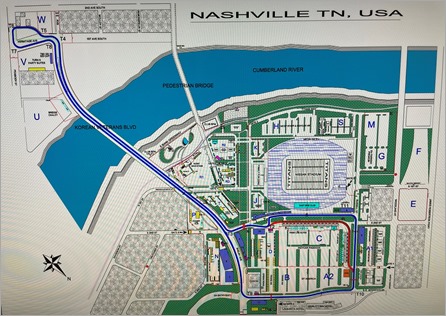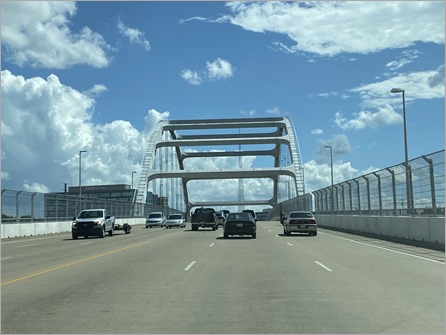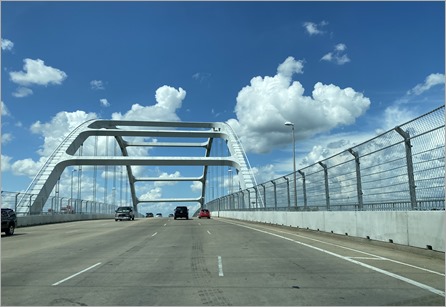Will it be Enough?

As I sit down to write this, I’m trembling with fear that it won’t be up to the standards that one of the readers of this site has apparently set. Friday’s post sure didn’t measure up to what one reader thought it should be. I’m fearful that this post won’t either. If it doesn’t, let me apologize in advance. That was sarcasm, by the way.
Now that I’ve gotten that out of the way, I am going to comment on the upcoming Big Machine Music City Grand Prix. In fact, my posts for the rest of this week and into next Monday will be focused on the Music City Grand Prix, so if you don’t care to read about “a boring street course” – you might want to take the week off, as I was told I should have done here last week.
Now that it is race week here in Nashville, the locals are really starting to take notice. Throughout each week, I travel around to various offices in the Middle Tennessee area for my work. Everyone in each office knows I’m a big IndyCar fan, and they all felt compelled to ask me about the race last week. For many of them; I think they learned about the event just in the last few days.
You can probably guess the most common question I hear; “Is it safe for them to be going over the river like that?”
I’m sure some of them suffered through the movie Driven at some point in their life, and they remember how common the car launches were in that dreadful movie. I’ve tried to erase that movie from my brain, but some scenes still remain embedded there – no matter how hard I try to purge them. The car being launched into the lake is one of them.
In case you didn’t know, the course for the Music City Grand Prix crosses the Cumberland River twice each lap, crossing the Korean Veterans Memorial Bridge each time.
It’s unique for an automobile race to cross a body of water. The claim is that this is the first time it’s ever been done. I don’t ever remember seeing it happen before, so I won’t dispute it. If you want to get technical, there was an open creek that ran beneath Turn One at IMS – but that was routed through a large pipe and covered up two or three decades ago. In the early decades of the Indianapolis 500, it wasn’t uncommon for a car to harmlessly end up there.
IndyCar runs many races per season next to water. Belle Isle sits in the middle of the Detroit River, and you can see water alongside the track in some of the shots. Long Beach, St. Petersburg and Toronto all have sections of track near the water; but none actually cross water. I learned something last week on Trackside that I didn’t know. At each of those races, boats with rescue divers are standing by just for the odd chance that something happens to put a car into the water.
Over the past few weeks, we have made several trips to the track build to watch the progress. They started putting the fencing up on the bridge the week after the July 4 holiday. At first glance, I thought the fencing looked a little short and not substantial. Both of my brothers are mechanical engineers. I sent the following photos to my oldest brother to get his opinion. These photos are not mine. I took them off of the Twitter page of Adam Stern (Motorsports reporter for the Sports Business Journal).
My brother assured me that the fencing looked very stout to him. He started talking about transferring loads and other terms that flew over my head, but I caught his gist – the fencing was strong and in his eyes, better than what he has seen at other tracks. He thought it also seemed tall enough. He said judging from the size of the cars on the bridge in the photos, he thought the height was comparable to what he has seen at other tracks. He conceded that the angled part at the top could be a little longer, but he gave the fence his thumbs-up for approval. That was good enough for me.
Last week on Trackside, a listener tweeted a question about the same thing. He was questioning the safety of the fence. They assured the listeners that this was the latest design in fencing and it was as strong orstronger than anything used previously at temporary or permanent tracks. They also said that track designer Tony Cotman took every single possible scenario into account when designing the course, and that included crashes on the bridge. Kevin Lee reminded us that the bridge was wide and straight, and did not present an area where crashes would be common.
A skeptic would point out that the crash that fatally injured driver Jeff Krosnoff and track marshal Gary Avrin, took place on a slightly curved straightaway in Toronto. Dario Franchitti’s career-ending crash at Houston also comes to mind. Anything is possible, but this section of track in Nashville is much wider and straighter than that fatal stretch in Toronto, or the much more curved section at Houston. It just happens to be over a body of water.
People that are much smarter than I am have looked at this and taken every remote possibility into account. I don’t think that any listeners on Trackside, any of my co-workers that just learned of the race, nor myself have thought of any possibility that the experts haven’t. I fully trust that any mishap that happens on the Korean Veterans Memorial Bridge, will stay on the bridge. I am expecting more carnage coming off of the bridge, as they field takes a hard left-hander just before heading into the section of track in front of Nissan Stadium.
So, will it be enough? I feel very confident saying that it will be enough. I expect nothing more to come from the cars crossing the bridge, than a good passing zone and some great aerial shots for the TV audience and the Chamber of Commerce.
I’m hoping this was a suitable topic for the few that like to come here and throw hissy-fits like a petulant child, when they don’t approve of what I wrote about. Perhaps they could come here for this weekend’s race and create their own site to write about the event. I doubt that either will happen.
George Phillips



August 2, 2021 at 4:12 am
Thanks George. Looking forward to your posts this week…
August 2, 2021 at 7:49 am
Off topic but a sidebar since you mentioned the creek at Indy. here is a comment, In 1985 my son and I had our crew creds even tho we had failed to make the show. So for the race since we had the creds to go anywhere we decided to go down to the creek in one and sit on the bank for the start of the race. When 33 cars roared into that first turn at the start of the race not only was the sound awesome we could feel the speed created vacuum from the pack rushing by. What a rush.
August 2, 2021 at 7:47 am
I think and hope this coming weekend MCGP events will prove to be a monumental start to an annual Music City tradition.
August 2, 2021 at 7:57 am
It’s so very important that events, especially new ones, spend extra resources to promote, promote, promote! Getting the word out on a new event needs a good marketing strategy, and to begin months in advance, as well as be consistently reminding folks at regular intervals leading up to the event. It looks like Nashville GP has done that and I hope they reap the rewards of the effort.
Nashville is a fun city, and this has the makings of a ‘new tradition’ and annual Indycar stop. Long may she run!
August 2, 2021 at 7:59 am
Amen to that DZ, we’re planning to fly over for next year’s race!
August 2, 2021 at 8:11 am
Hello. I was just in Nashville for a Garth concert (that didn’t happen because of rain/storms) and the course looks great. I hope its a big hit with the town. There is lots of marketing behind this race which was fun to see as I walked around the city.
August 2, 2021 at 8:18 am
I believe the original intent of track side guardrail and fencing was implemented to keep cars ,tires and debris confined to the track to protect the paying spectators. This remains the primary purpose and has been improved ( SAFER barrier , better fencing construction and design) to allow protection for the race participants . As there are unlikely to be spectators at risk on the bridge the height of the fence may not be important at that location . There is always the risk of wheel to wheel contact and launching a car in to the air but it’s been a long time since a car has cleared a fence or completely gone through one . Cars going over the bridge will be a dramatic image but completely safe. The age old question with fencing is how high is high enough, hockey arenas , baseball stadiums all face the same issues , you cannot build it tall enough or solid enough to stop every projectile and yet allow for reasonable viewing
1982 watched some qualifying next to the creek in turn 1 at IMS and it was quite a memorable experience
August 2, 2021 at 8:44 am
This is a good point, even the most maligned Indycar fences (like the Houston one that Franchitti hit) have, in recent years, kept the cars and most debris on the track… and with no spectators on the bridge, the debris element is less of a concern than it normally is.
I would be surprised if the bridge fencing gets tested this weekend.
August 2, 2021 at 8:51 am
The Belle Isle track also crosses a small bridge over a creek, just past turn 2 near pit out. Though like IMS, it is nothing like what we’re going to see in Nashville.
In fact, the only track that comes to mind as being similar to Nashville with the long bridge straights is the the expert track on the old Daytona USA arcade game. That’s how wild this is.
August 2, 2021 at 9:16 am
This will be an exciting week of racing, music and friends. I have a friend that I’ll be with that is always on the go and I’m looking forward to, once again, hearing his fascinating stories and watching another race with him. He even told me that there is talk of making a ‘feature film’ of the Music City Grand Prix because of the excitement of the city and the music aspect. Maybe they will be shooting that next year because this year they will be developing a story. Anyway, the city of Nashville is the star this week and an exciting race is to be had by all.
August 2, 2021 at 10:41 am
Looking at the track layout from that angle, it looks like a giant musical note. Surely that was deliberate, right?
August 2, 2021 at 11:59 am
George, Really enjoy all your articles and are hoping for a great, safe race weekend in Nashville. The street races that crossed rivers (twice) I want to add two (2) Trans-Am races. In 1990 the Des Moines Grand Prix over the Iowa river, and in 1998 and 1999 The Grand Rapids Grand Prix over the Grand River. I admit the featured event was the Trans-Am race, not Indy cars. I do know that these two events, along with the Detroit Grand Prix on Belle Isle had boats in the water to rescue drivers who might end up in the water! To my knowledge they were never needed.
August 2, 2021 at 12:03 pm
I am looking forward to you and Susan’s coverage of the weekend.
August 3, 2021 at 1:29 pm
George, I have to say one thing about your article that I noticed that I want to address. It’s about the unfortunate fatal accident of Jeff Krosnoff and Gary Avrin in the 1996 Molson Indy Toronto. The reason Jeff and Gary died was a bad flaw in the way the crash barriers were constructed. I you look at footage of the 1996 event you will see the concrete wall on Lakeshore Drive with no catch fencing attached on top of it. Instead there is a tall fence about 8 or 9 feet behind the wall. And in between there are track workers and Street Lamps. Krosnoff hit one of these street lamps right in the cockpit. That is unfortunately what ended his life. Avrin was in front of the catch fencing (as was everyone else in that section of the track). I’d also like to point out that this was how the wall/fence setup was from the first event in 1986 until this tragic incedent.
If the catch fencing had been installed on top of the wall (Like it was done the next year in 1997 until today), I believe neither Krosnoff nor Avrin would have lost their lives. Sure there would have been injuries. But there would not have been those deaths.
My point for this whole post is it’s simply not comparing the same thing when someone points out Toronto 1996 as an example of danger on a “narrow” piece of track with walls and fences.
I’m not trying to admonish anyone, but I felt the need to point out this important fact.